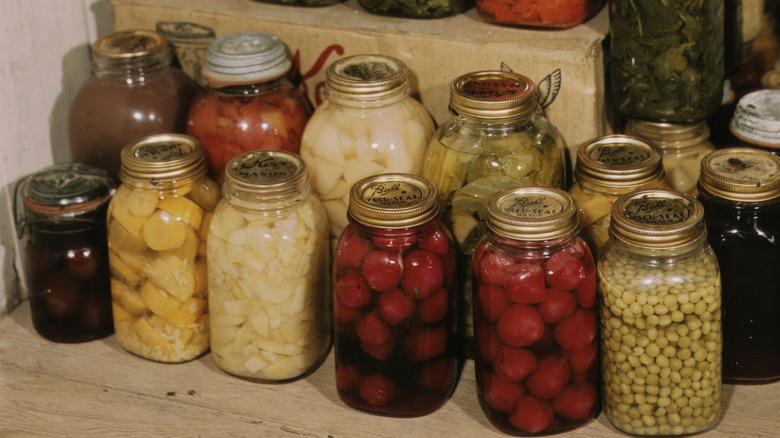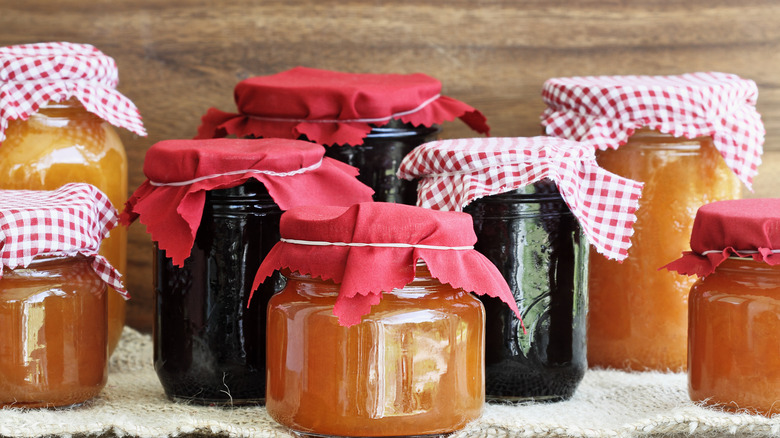Is It Possible To Can Frozen Fruits And Vegetables?
When it comes to preserving foods, home canning can be a great experience and a way to put food on your pantry shelf that you can use at a later date. Canning is something that can be done year round — although there can be a canning season or the time of year when people can more items over other seasons, as detailed by Grow a Good Life. The reason for canning more during harvest time is that many home canners use produce they've grown themselves from their home gardens, or fresh produce they've bought in season from farmers' markets.
But maybe you put some of your harvest away in the freezer months ago, and now you're hoping to free up some freezer space by making those items shelf-stable. Before you break out the home canning equipment, it's important to know that canning with frozen fruits and vegetables requires a few extra steps.
Focus on fruit rather than vegetables
According to Mrs. Wages, one way to successfully use up frozen fruit is to make homemade jam. There are several steps to take to ensure success when using frozen fruits for jams, and the most important step is to thaw the fruit before using them in canned jams. When thawing fruit, for the best outcome, it's crucial not to let it sit too long during the thawing process since the longer the fruit thaws, the more liquid is released — and that liquid can impact the jam's thickness (per Mrs. Wages).
If you have vegetables in the freezer, it's possible to use them in home canned goods. As detailed by Simply Canning, while you may use frozen vegetables and home can them safely, you may not be pleased with the results. Since home canning vegetables requires blanching and then pressure canning, if you opt for using frozen vegetables over fresh ones, you're likely to end up with jars of squishy, overcooked vegetables as the food breaks down slightly during the freezing process (via Simply Canning).

